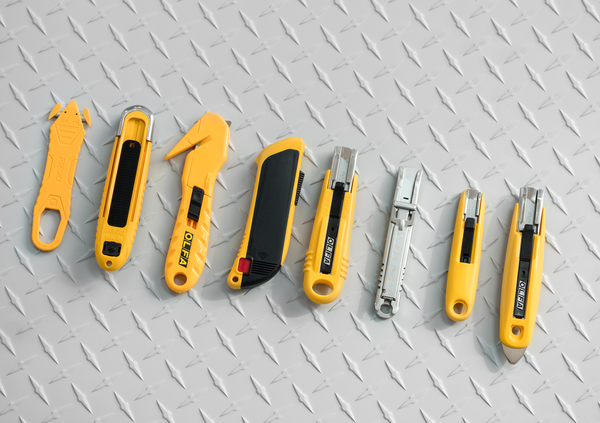
The Ultimate Guide to Work Safety
Did you know that in 2020, there were over 148,000 hand injuries reported at work, and over 56% of those injuries were due to cuts, lacerations or punctures? This is why work safety is a critical element in a worker’s everyday life. It entails providing a safe work environment, secure procedures and the right equipment to ensure employees’ health and safety. This is especially true when it comes to utility knives, as they are necessary tools in many workplaces, and used in a variety of industries.
A safe and healthy workplace not only protects workers from injury and illness, it can also lower injury costs, reduce turnover, increase productivity and raise employee morale. In 2020, there were over 59,400 medical claims filed for hand injuries from cuts and lacerations, with an all claim average of $42,008. In addition to these costs, there are other indirect costs associated with work safety: from wages not covered by worker’s compensation, wage charges related to time lost, employee retraining, replacement costs, to administrative time for accident reporting.

But, how do you ensure work safety? In this article, we are going to outline the recommended safety tips and tools that will decrease the chances of getting injured while at work.
- Use The Right Tools
Every tool is unique and built for specific tasks. Using ergonomically well-designed tools that feature appropriate handles, blades or locking mechanisms can be key in ensuring work safety. With that in mind, OLFA has designed a line of safety knives that will (quite literally) put safety in your hands.
- Semi-Automatic Safety Knives: these knives feature spring-activated handles that self-retract when the blade loses contact with the cutting surface and the slide is disengaged. Semi-automatic knives are helpful because the worker doesn’t have to remember to close the blade after each use, which in turns helps prevent injuries due to reaching for a knife and touching an open blade. Included are the OLFA SK-4, SK-7, SK-9 & SK-14.
- Fully-Automatic Safety Knives: these knives have enhanced safety features that retract or shield the blade even if the slider is engaged. As soon as the blade leaves the cutting surface, the safety guard encloses the blade to protect the user from blade exposure and injury. These types of safety knives provide increased protection for both the user and the material. Included are the OLFA SK-6 & SK-8.
- Concealed Blade Safety Knives: a recessed blade concealed within the cutting channel delivers continual cutting with zero blade exposure. Due to the design, only a small area of the blade is released, while the rest is sheathed to avoid contact with the user— so even the most distracted workers are safe. Included are the OLFA SK-15 & SK-10.
- Learn The Safety Tips
Once you have safety knives in your tool belt, it’s important that you learn how to use them properly. Each safety knife comes with specific instructions, although there are some rule-of-thumb guidelines that should always be followed: from keeping your fingers out of the cutting line, to cutting away from your body, to using the right protective equipment. Learning how to handle your tools will ensure you can always work efficiently, while being safe.
- Maintain Your Knives Properly
When workers use a dull knife, they must exert additional force each time they cut, which can cause them to lose control of the tool and hurt themselves. That’s why it’s important to keep safety knives sharp and well-maintained. Most of OLFA safety knives feature mechanisms that allow for easy blade changes: from a simple change of the blade position to expose a fresh blade edge, to an easy flip of the blade. To ensure ongoing safety, all discarded blades also need to be placed in a safe storage container. OLFA offers Blade Disposal Cans, so workers can dispose of the blades quickly and safely.
Failing to follow these safety guidelines could turn one of your most-used (and loved) tool into a hazard. No matter how experienced you are or what you’re using your knife for, it’s important to always remember the basics of knife handling and safety— so you can cut and work with confidence.




